Himalayan pink salt isn’t just another fancy seasoning to sprinkle on your food. Himalayan Pink Salt Benefits packed with over 80 trace minerals—including potassium, magnesium, and calcium—it’s more than just a pretty pink crystal. Often dubbed the “purest salt on Earth,” it’s harvested from ancient mines deep inside the Himalayan mountains, untouched by modern pollutants. But here’s the real kicker—this natural wonder isn’t only for your palate. From improving hydration to promoting better skin, its benefits go far beyond the kitchen.
If you’ve been hearing chatter about Himalayan pink salt being healthier or wondering how it stacks up against regular table salt, you’re in the right place. This article dives into its fascinating origins and untapped potential, backed by insights that bring value to your everyday life. By the end, you’ll discover why this mineral-rich treasure deserves a spot in your pantry—and maybe even your self-care routine. Let’s explore how this unassuming pink crystal can make a remarkable difference!
Himalayan pink salt is more than just an aesthetically pleasing seasoning for food. With its rosy hue and unrefined purity, it has gained prominence as a health-boosting alternative to regular table salt. But is this salt really a game-changer, or does it simply taste good and look pretty? This article dives deep into himalayan pink salt benefits and unpacks the science, separating facts from myth. Stick around to discover why this mineral treasure deserves a closer look.
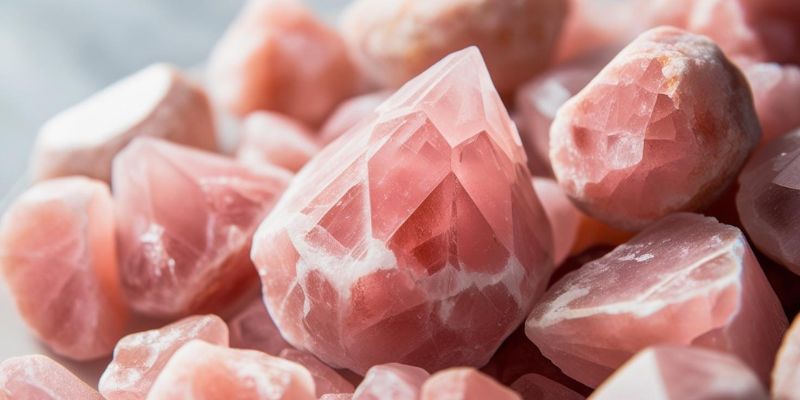
What Is Himalayan Pink Salt?
Himalayan pink salt is a natural rock salt harvested from the Khewra Salt Mine in Pakistan’s Punjab region. This mine, located near the Himalayan foothills, is one of the oldest and largest salt deposits in the world, formed over 250 million years ago. Unlike table salt, which is highly refined and stripped of most minerals, pink salt undergoes minimal processing, retaining up to 84 trace minerals like potassium, calcium, and magnesium.
The salt’s iconic pink hue comes from iron oxide (rust), along with the presence of other natural minerals. It’s this rich composition that contributes to its reputation as a “healthier salt.”
Why Is Himalayan Salt Pink?
The pink color of this salt isn’t just for show; it’s a visual cue of its mineral content. The distinct hue is the result of trace amounts of iron oxide embedded in the salt crystals. Alongside iron, other trace minerals like magnesium and calcium also contribute to its unique composition. Compared to sea salt or table salt, the pink crystals offer a more nutrient-dense mix, albeit in very tiny amounts.
Himalayan Pink Salt vs Regular Salt
Wondering if Himalayan pink salt really holds an edge over regular table salt? Here’s a direct comparison:
- Purity: Pink salt is raw and unrefined, while table salt is heavily processed and often includes additives like anti-caking agents.
- Sodium Content: Regular salt comprises about 98-99% sodium chloride, while pink salt contains slightly less—usually around 87-98%.
- Mineral Profile: Unlike table salt, which is stripped of all other minerals, pink salt retains trace levels of nearly 80 elements. For instance:
- Calcium: Essential for bone health.
- Potassium and magnesium: Crucial for nerve and muscle function.
- Iron: Provides its pinkish tint.
While these differences may seem striking, it’s worth noting that the additional minerals in Himalayan salt are minimal—too small to make a significant nutritional impact from everyday use. However, its natural state and lack of added chemicals remain appealing to health-conscious consumers.
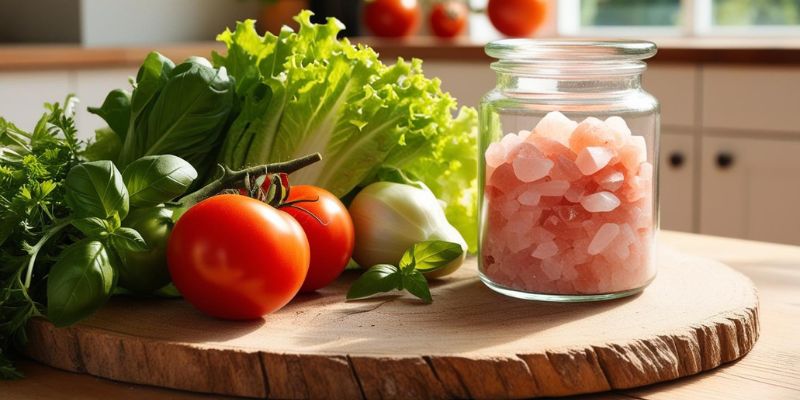
What Is Pink Himalayan Salt Good For?
Himalayan pink salt is versatile. Here’s how it’s commonly used:
- Culinary Uses: Pink salt is employed as seasoning, curing meats, or even as a surface for grilling (salt blocks are perfect for searing seafood or steaks).
- Wellness: Despite some questionable claims, many use it in salt lamps, baths, scrubs, and even salt inhalers to promote relaxation and respiratory health.
- Aesthetic Touch: Its coarse texture and color often make it a favorite for garnishing dishes.
This versatility makes Himalayan pink salt more than just a pantry staple—it’s an all-rounder for health and lifestyle.
9 Fascinating Himalayan Pink Salt Benefits
Himalayan pink salt benefits go beyond its visually appealing hue. From health to skincare, this mineral-rich salt has made its mark as a versatile addition to both your pantry and your wellness routine. Below, we’ll take a deep dive into its unique advantages, backed by insights and practical examples that prove why it has gained such immense popularity.
1. Improves Hydration and Electrolyte Balance
Electrolytes such as sodium, potassium, and magnesium are critical for maintaining hydration levels in the body. Himalayan pink salt, rich in these trace minerals, serves as an excellent natural electrolyte booster. If you’ve just finished a rigorous workout or are recovering from dehydration, adding a pinch of Himalayan pink salt to your water can assist in replenishing lost minerals. Unlike sugary sports drinks, this is a chemical-free way to hydrate and restore balance. While the sodium concentration in pink salt is slightly lower than in traditional table salt, its effectiveness in maintaining fluid and mineral balance remains high due to the presence of other crucial minerals.
For example, athletes often switch to homemade electrolyte drinks using pink salt mixed with water, a splash of lemon juice, and honey to avoid additives found in commercial options.
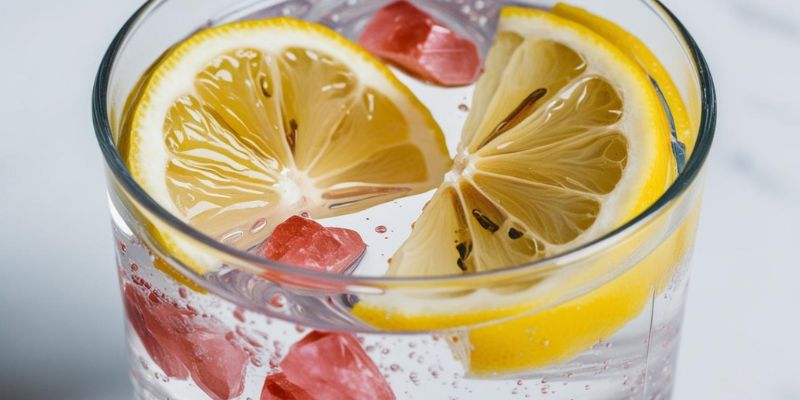
2. Balances pH Levels
One of the lesser-known himalayan pink salt benefits is its ability to support the body in maintaining optimal pH levels. Although your kidneys and lungs primarily handle pH regulation, the trace minerals in pink salt may help reduce acidic build-up from unhealthy diets. By promoting a slightly alkalizing effect when consumed in moderation, it aids in creating a more balanced internal environment. This balance can lead to improved energy levels and reduced inflammation over time.
For example, incorporating a pinch of pink salt into detox drinks or smoothies has become a popular way for many to balance acidity levels after consuming processed or acidic foods.
3. Supports Respiratory Health
Himalayan pink salt is widely used in non-dietary applications to combat respiratory issues. Salt therapy, often called “Halotherapy,” is a treatment that uses fine salt particles to clear airways. When inhaled via salt lamps or inhalers, pink salt is believed to reduce mucus buildup, ease breathing, and alleviate symptoms tied to allergies or asthma. Though comprehensive scientific data is lacking, anecdotal reports highlight its potential benefits for improving respiratory comfort.
Salt caves, where walls are lined with Himalayan salt, have also become wellness destinations for those seeking relief from conditions like chronic bronchitis or sinusitis. The antibacterial properties of salt particles work as a natural air purifier, creating a clean and soothing respiratory environment.
4. Enhances Nutrient Absorption
Digestive health is another area where himalayan pink salt benefits shine. Its composition helps stimulate enzymes in the mouth and stomach, promoting the breakdown and absorption of important nutrients. By aiding in the activation of salivary glands, pink salt ensures that food is better processed and valuable nutrients are absorbed efficiently. Plus, the salt’s mineral-rich nature complements a balanced diet, preventing nutrient deficits.
A practical tip is to replace your table salt with pink salt while cooking. For instance, seasoning roasted vegetables or soups with Himalayan pink salt not only adds flavor but also offers trace minerals to support nutrient absorption.
5. Promotes Skin Health
When used externally, Himalayan pink salt works wonders for the skin. A warm bath infused with this salt helps detoxify the skin by drawing out impurities. Its anti-inflammatory properties soothe conditions like eczema, acne, and dryness, leaving the skin refreshed and hydrated. Additionally, the magnesium and potassium content promote blood circulation, making it ideal for post-exercise recovery.
Many use pink salt to make DIY scrubs by blending it with coconut oil or essential oils. These scrubs not only exfoliate dead skin cells but also nourish the skin, leaving a radiant glow. This makes it one of the most versatile himalayan pink salt benefits for self-care routines.
6. May Improve Sleep Quality
Struggling with restless nights? Himalayan pink salt may contribute to better sleep. Sodium levels in the body are integral to regulating hormones like cortisol and melatonin, which influence stress and sleep cycles. The trace minerals in pink salt work to balance these hormonal fluctuations, potentially promoting relaxation and deeper sleep.
To harness its benefits, some people create a nighttime drink by mixing warm water, a pinch of Himalayan pink salt, and honey. This calming ritual helps prepare the body for restful sleep while addressing sodium imbalances.
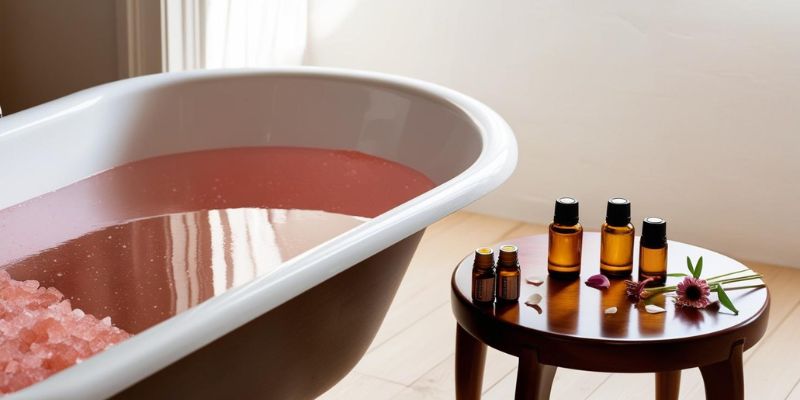
7. Boosts Circulation and Detoxification
Himalayan pink salt has long been used to promote healthy circulation and detoxify the body. When used in a bath, it opens up pores, stimulates blood flow, and encourages the removal of toxins through the skin. The warming properties of salt baths also provide relief for sore muscles and joints, making them perfect for relaxation after physical activity.
For instance, athletes and wellness enthusiasts alike swear by using pink salt baths as part of their muscle recovery regimes. Additionally, some health spas offer Himalayan salt wraps, which combine the detoxifying power of salt with heat therapy to revitalize the body.
8. Provides Relief from Sore Throats
One of the most traditional himalayan pink salt benefits is its effectiveness in relieving sore throats. Gargling with warm salt water is a time-tested remedy for throat infections and inflammation. The antibacterial properties of pink salt help reduce throat pain and eliminate harmful bacteria, providing quick and natural relief.
To make this simple remedy, dissolve half a teaspoon of pink salt in a glass of warm water and gargle two to three times a day. Many people find this approach more effective and less irritating than store-bought medicated solutions.
9. Acts as a Natural Mineral Supplement
Himalayan pink salt offers a mix of trace minerals, including magnesium, calcium, potassium, and iron. These minerals, although present in small quantities, can complement a nutrient-dense diet. For those aiming to cut back on overly processed, refined table salt, pink salt serves as a healthier, unrefined alternative.
For example, individuals on a natural diet often switch to using Himalayan pink salt in their seasoning, not just for its mineral content but also for the satisfaction of consuming a less-processed, sustainable product.
Practical Tips for Using Himalayan Pink Salt
Want to get the best out of your pink salt? Here are some tips:
- Cooking: Use it in place of table salt for seasoning, but measure carefully due to the difference in sodium concentration between coarse and fine varieties.
- Athletic Recovery: Dissolve it in water for a natural electrolyte drink after physical exercise.
- Self-Care: Mix it with carrier oils to create a DIY salt scrub or add a cup to your bath for relaxation.
Is Himalayan Pink Salt the Right Choice for You?
Ultimately, deciding whether to use Himalayan pink salt comes down to personal preference. While its additional minerals offer minimal nutritional benefit, it’s a natural, unprocessed alternative to table salt. However, keep in mind that overconsumption of any salt—pink or otherwise—can pose health risks such as hypertension, dehydration, or kidney strain. Aim for no more than 2,300 mg of sodium per day, as recommended by health professionals.
If you’re someone who enjoys minimalist, natural products, pink salt is worth trying. But supplement your diet with iodine-rich foods like fish or seaweed if you switch from iodized table salt.
Discover more about the incredible benefits of moringa seeds in our detailed guide: 13 Special Ways Moringa Seeds Enrich Lives.
Final Thoughts on Himalayan Pink Salt Benefits
Himalayan Pink Salt Benefits is more than just a seasoning; it’s a lifestyle choice for those looking to prioritize natural, minimally processed ingredients. While some of the health claims surrounding it lack robust scientific backing, there’s no denying its versatility and aesthetic appeal. From enhancing meals to promoting wellness, this vibrant mineral treasure deserves a place in your pantry and beyond. Try it out and see how it transforms your health rituals!
Unleash the vibrant, smoky, and subtly sweet taste of Kashmiri chili powder with these 9 bold flavors you’ll absolutely love—click to savor the details!
Stay connected with us!
- Follow us on Instagram: @RoastedKitchen25 for daily cooking inspiration.
- Subscribe to our newsletter for exclusive recipes, expert tips, and kitchen hacks straight to your inbox!
FAQ Section on Himalayan Pink Salt Benefits
1. What makes Himalayan pink salt different from regular table salt?
Himalayan pink salt is minimally processed and retains trace minerals like potassium, calcium, and magnesium, giving it a unique pink hue. Regular table salt, on the other hand, is heavily refined with added chemicals like anti-caking agents and often iodized to prevent iodine deficiency.
2. Are the Himalayan Pink Salt Benefits on health scientifically proven?
While Himalayan pink salt has trace minerals that can offer minor health benefits, most claims like balancing pH levels or detoxification are not strongly backed by scientific evidence. However, its unrefined nature and clean sourcing make it a natural alternative to processed salts.
3. How can Himalayan pink salt improve overall health?
Himalayan pink salt can support hydration, enhance nutrient absorption, and even promote relaxation when used in baths. Its use in natural remedies, like saltwater gargles for sore throats, highlights its multipurpose benefits in moderation.
4. Can Himalayan pink salt replace regular table salt in cooking?
Yes, Himalayan pink salt can replace table salt in cooking. Its coarse texture and saltier taste may mean using slightly less than you would with regular salt. Be mindful of the sodium content, as overconsumption of any salt can pose health risks.
5. Is Himalayan pink salt a good source of iodine?
Himalayan pink salt contains lower levels of iodine compared to iodized table salt. If you switch to Himalayan pink salt, make sure to include iodine-rich foods like seafood, eggs, or seaweed in your diet to avoid iodine deficiency.

Food has been at the heart of my life since childhood. My father, a passionate restaurateur, owned and ran Cave Way, a beloved restaurant in Narayanganj, Bangladesh. For 19 wonderful years, Cave Way delighted customers with its warm atmosphere and mouthwatering dishes. It was more than a restaurant; it was a community landmark. When my father passed away, the restaurant’s doors closed, but its legacy lived on in me. As a businessman and food enthusiast, I’ve always felt a connection to the joy and stories that food brings into our lives. Roasted Kitchen is my way of honoring that legacy, sharing my passion, and connecting with others who love cooking as much as I do.

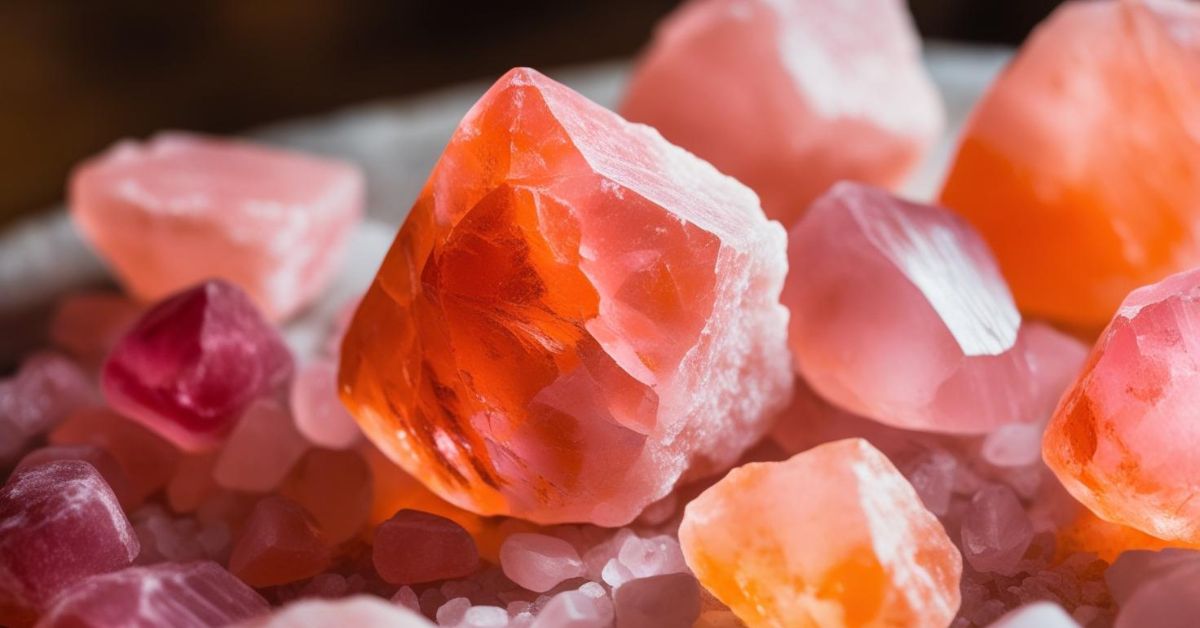
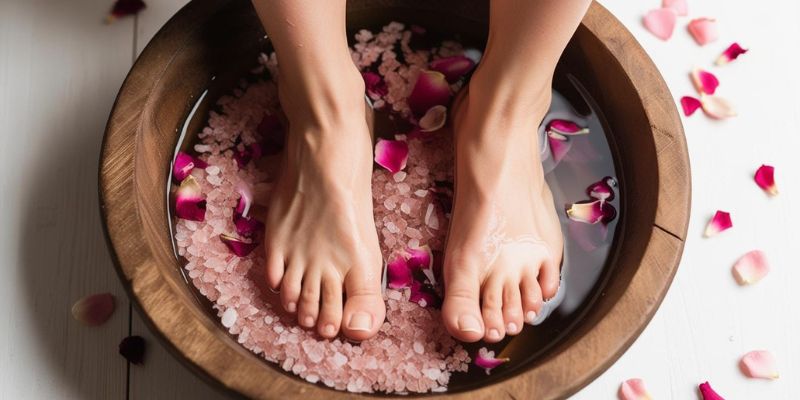








 Subscribe to our free newsletter for tips, tutorials, and insights!
Subscribe to our free newsletter for tips, tutorials, and insights!